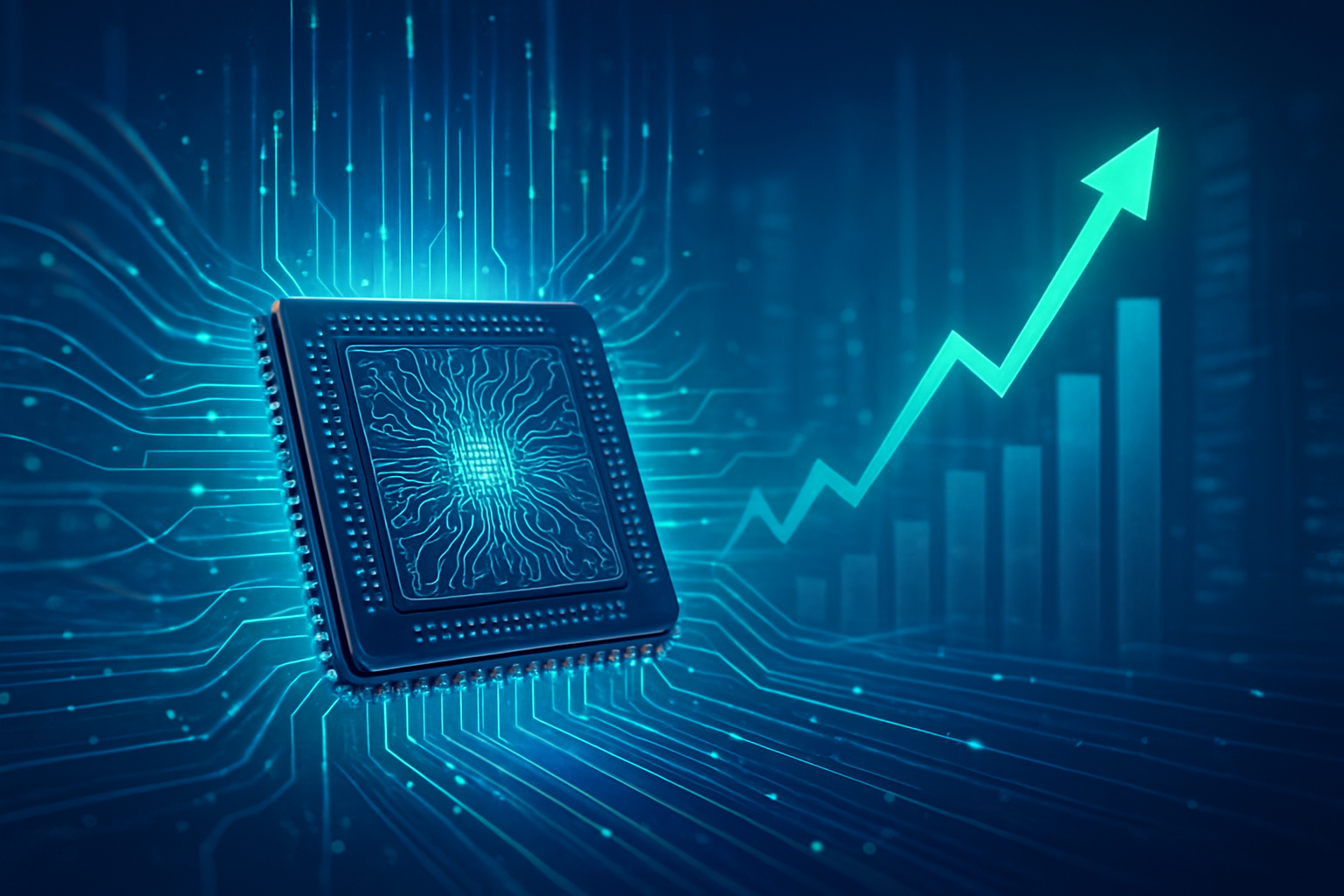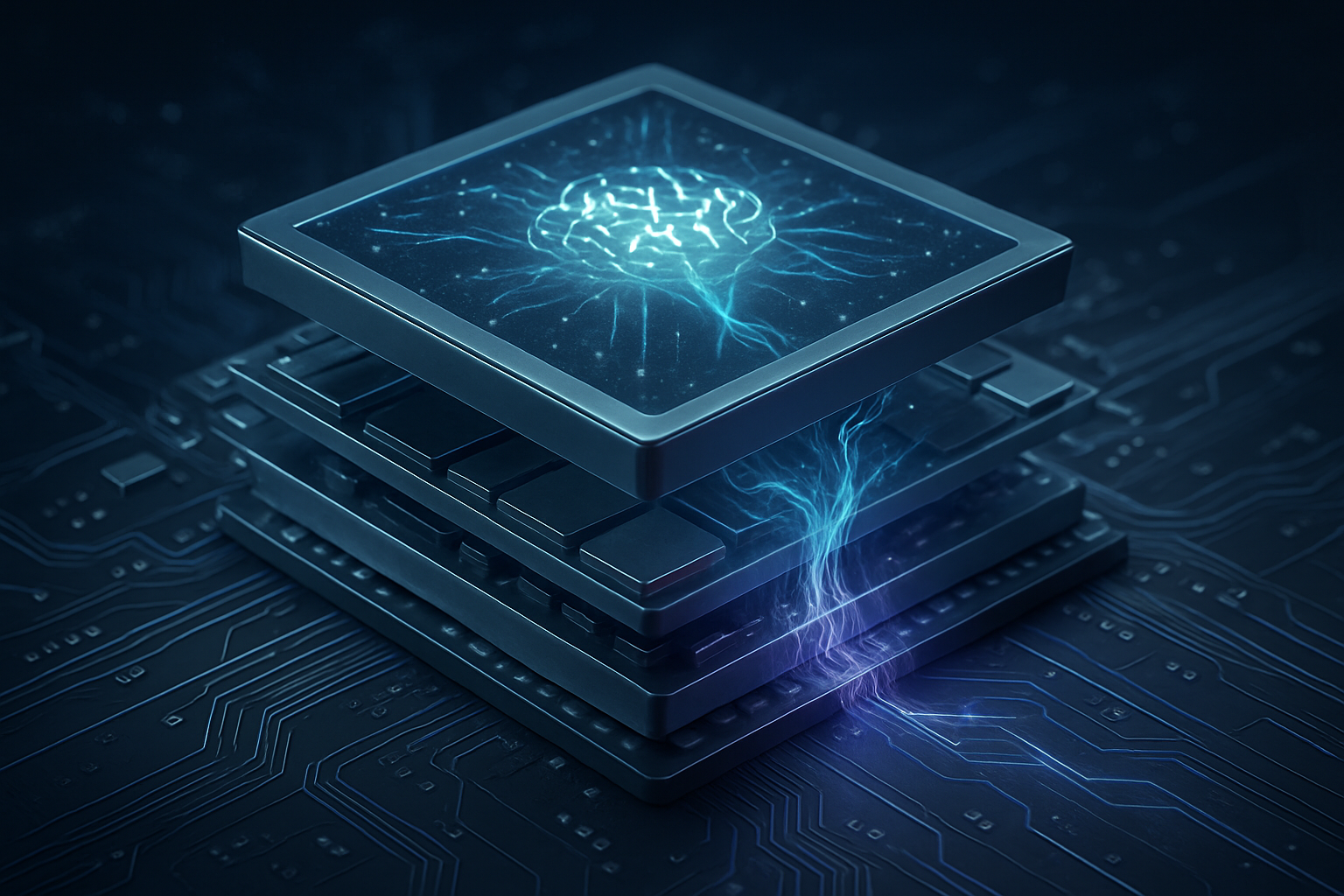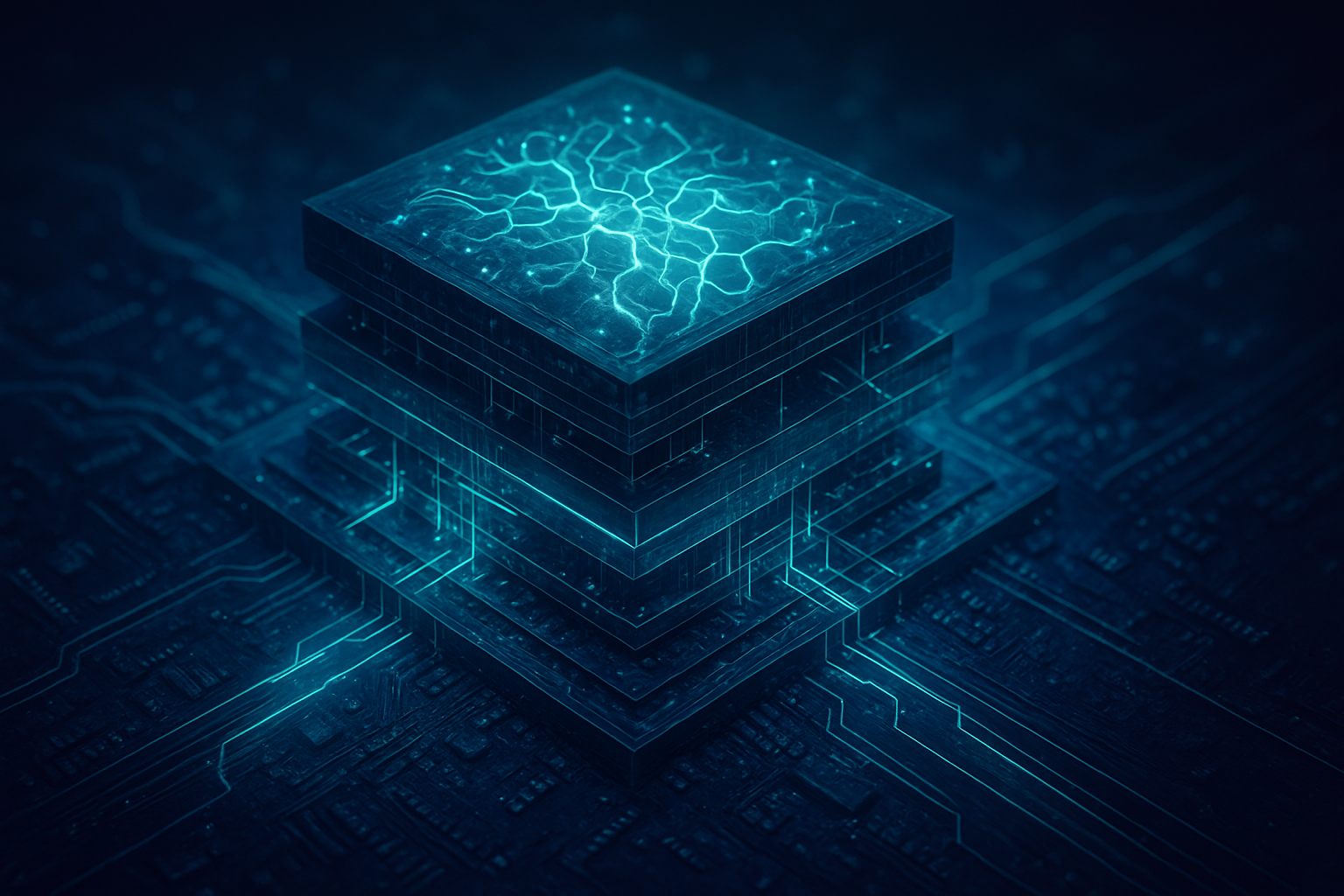Veldhoven, The Netherlands – October 23, 2025 – BE Semiconductor Industries N.V. (AMS: BESI), a leading global supplier of semiconductor assembly equipment, today announced its third-quarter 2025 financial results, revealing a complex picture of market dynamics. While the company faced declining revenue and net income in the quarter, it also reported a significant surge in order intake, primarily fueled by robust demand for advanced packaging solutions in the burgeoning Artificial Intelligence and data center sectors. Alongside these results, Besi unveiled a new €60 million share repurchase program, signaling a strategic commitment to shareholder value and capital management in a fluctuating semiconductor landscape.
The immediate significance of Besi's Q3 report lies in its dual narrative: a challenging present marked by macroeconomic pressures and a promising future driven by disruptive AI technologies. The strong rebound in orders suggests that despite current softness in mainstream markets, the underlying demand for high-performance computing components is creating substantial tailwinds for specialized equipment providers like Besi. This strategic financial maneuver, coupled with an optimistic outlook for Q4, positions Besi to capitalize on the next wave of semiconductor innovation, even as it navigates a period of adjustment.
Besi's Q3 2025 Performance: A Deep Dive into Financials and Strategic Shifts
BE Semiconductor's Q3 2025 earnings report, released today, paints a detailed financial picture. The company reported revenue of €132.7 million, a 10.4% decrease from Q2 2025 and a 15.3% year-over-year decline from Q3 2024. This figure landed at the midpoint of Besi’s guidance but fell short of analyst expectations, reflecting ongoing softness in certain segments of the semiconductor market. Net income also saw a notable decline, reaching €25.3 million, down 21.2% quarter-over-quarter and a significant 45.9% year-over-year. The net margin for the quarter stood at 19.0%, a contraction from previous periods.
In stark contrast to the revenue and net income figures, Besi's order intake for Q3 2025 surged to €174.7 million, marking a substantial 36.5% increase from Q2 2025 and a 15.1% rise compared to Q3 2024. This impressive rebound was primarily driven by increased bookings from Asian subcontractors, particularly for 2.5D datacenter and photonics applications, which are critical for advanced AI infrastructure. This indicates a clear shift in demand towards high-performance computing and advanced packaging technologies, even as mainstream mobile and automotive markets continue to experience weakness. The company's gross margin, at 62.2%, exceeded its own guidance, though it saw a slight decrease from Q2 2025, primarily attributed to adverse foreign exchange effects, notably the weakening of the USD against the Euro.
Operationally, Besi continued to make strides in its wafer-level assembly activities, securing new customers and orders for its cutting-edge hybrid bonding and TC Next systems. These technologies are crucial for creating high-density, high-performance semiconductor packages, which are increasingly vital for AI accelerators and other advanced chips. While revenue from hybrid bonding was lower in Q3 2025, the increased orders suggest a strong future pipeline. The company’s cash and deposits grew to €518.6 million, underscoring a solid financial position despite the quarterly revenue dip. This robust cash flow provides the flexibility for strategic investments and shareholder returns, such as the recently completed €100 million share buyback program and the newly announced €60 million initiative.
The newly authorized €60 million share repurchase program, effective from October 24, 2025, and expected to conclude by October 2026, aims to serve general capital reduction purposes. Crucially, it is also designed to offset the dilution associated with Besi's Convertible Notes and shares issued under employee stock plans. This proactive measure demonstrates management's confidence in the company's long-term value and its commitment to managing capital efficiently. The completion of the previous €100 million buyback program just prior to this announcement highlights a consistent strategy of returning value to shareholders through judicious use of its strong cash reserves.
Industry Implications: Riding the AI Wave in Semiconductor Packaging
Besi's Q3 results and strategic decisions carry significant implications for the semiconductor packaging equipment industry, as well as for the broader tech ecosystem. The pronounced divergence between declining mainstream market revenue and surging AI-driven orders highlights a critical inflection point. Companies heavily invested in advanced packaging technologies, particularly those catering to 2.5D and 3D integration for high-performance computing, stand to benefit immensely from this development. Besi, with its leadership in hybrid bonding and other wafer-level assembly solutions, is clearly positioned at the forefront of this shift.
This trend creates competitive implications for major AI labs and tech giants like NVIDIA, AMD, and Intel, which are increasingly reliant on advanced packaging to achieve the performance densities required for their next-generation AI accelerators. Their demand for sophisticated assembly equipment directly translates into opportunities for Besi and its peers. Conversely, companies focused solely on traditional packaging or those slow to adapt to these advanced requirements may face increasing pressure. The technical capabilities of Besi's hybrid bonding and TC Next systems offer a distinct advantage, enabling the high-bandwidth, low-latency interconnections essential for modern AI chips.
The market positioning of Besi is strengthened by this development. While the overall semiconductor market experiences cyclical downturns, the structural growth driven by AI and data centers provides a resilient demand segment. Besi's focus on these high-growth, high-value applications insulates it somewhat from broader market fluctuations, offering a strategic advantage over competitors with a more diversified or less specialized product portfolio. This focus could potentially disrupt existing product lines that rely on less advanced packaging methods, pushing the industry towards greater adoption of 2.5D and 3D integration.
The strategic buyback plan further underscores Besi's financial health and management's confidence, which can enhance investor perception and market stability. In a capital-intensive industry, the ability to generate strong cash flow and return it to shareholders through such programs is a testament to operational efficiency and a solid business model. This could also influence other equipment manufacturers to consider similar capital allocation strategies as they navigate the evolving market landscape.
Wider Significance: AI's Enduring Impact on Manufacturing
Besi's Q3 narrative fits squarely into the broader AI landscape, illustrating how the computational demands of artificial intelligence are not just driving software innovation but also fundamentally reshaping the hardware manufacturing ecosystem. The strong demand for advanced packaging, particularly 2.5D and 3D integration, is a direct consequence of the need for higher transistor density, improved power efficiency, and faster data transfer rates in AI processors. This trend signifies a shift from traditional Moore's Law scaling to a new era of "More than Moore" where packaging innovation becomes as critical as transistor scaling.
The impacts are profound, extending beyond the semiconductor industry. As AI becomes more ubiquitous, the manufacturing processes that create the underlying hardware must evolve rapidly. Besi's success in securing orders for its advanced assembly equipment is a bellwether for increased capital expenditure across the entire AI supply chain. Potential concerns, however, include the cyclical nature of capital equipment spending and the concentration of demand in specific, albeit high-growth, sectors. A slowdown in AI investment could have a ripple effect, though current trends suggest sustained growth.
Comparing this to previous AI milestones, the current situation is reminiscent of the early days of the internet boom, where infrastructure providers saw massive demand. Today, advanced packaging equipment suppliers are the infrastructure providers for the AI revolution. This marks a significant breakthrough in manufacturing, as it validates the commercial viability and necessity of complex, high-precision assembly processes that were once considered niche or experimental. The ability to stack dies and integrate diverse functionalities within a single package is enabling the next generation of AI performance.
The shift also highlights the increasing importance of supply chain resilience and geographical distribution. As AI development becomes a global race, the ability to produce these sophisticated components reliably and at scale becomes a strategic national interest. Besi's global footprint and established relationships with major Asian subcontractors position it well within this evolving geopolitical and technological landscape.
Future Developments: The Road Ahead for Advanced Packaging
Looking ahead, the strong order book for BE Semiconductor suggests a positive trajectory for the company and the advanced packaging segment. Near-term developments are expected to see continued ramp-up in production for AI and data center applications, leading to increased revenue recognition for Besi in Q4 2025 and into 2026. Management's guidance for a 15-25% revenue increase in Q4 underscores this optimism, driven by the improved booking levels witnessed in Q3. The projected increase in R&D investments by 5-10% indicates a commitment to further innovation in this critical area.
In the long term, the potential applications and use cases on the horizon for advanced packaging are vast. Beyond current AI accelerators, hybrid bonding and 2.5D/3D integration will be crucial for emerging technologies such as quantum computing, neuromorphic chips, and advanced sensor fusion systems. The demand for higher integration and performance will only intensify, pushing the boundaries of what semiconductor packaging can achieve. Besi's continuous progress in wafer-level assembly and securing new customers for its hybrid bonding systems points to a robust pipeline of future opportunities.
However, challenges remain. The industry must address the complexities of scaling these advanced manufacturing processes, ensuring cost-effectiveness, and maintaining high yields. The adverse foreign exchange effects experienced in Q3 highlight the need for robust hedging strategies in a global market. Furthermore, while AI-driven demand is strong, the cyclical nature of the broader semiconductor market still presents a potential headwind that needs careful management. Experts predict that the focus on "chiplets" and heterogeneous integration will only grow, making the role of advanced packaging equipment suppliers more central than ever.
The continued investment in R&D will be crucial for Besi to maintain its technological edge and adapt to rapidly evolving customer requirements. Collaboration with leading foundries and chip designers will also be key to co-developing next-generation packaging solutions that meet the stringent demands of future AI workloads and other high-performance applications.
Comprehensive Wrap-Up: Besi's Strategic Resilience
In summary, BE Semiconductor's Q3 2025 earnings report presents a compelling narrative of strategic resilience amidst market volatility. While mainstream semiconductor markets faced headwinds, the company's significant surge in orders from the AI and data center sectors underscores the pivotal role of advanced packaging in the ongoing technological revolution. Key takeaways include the strong demand for 2.5D and 3D integration technologies, Besi's robust cash position, and its proactive approach to shareholder value through a new €60 million stock buyback program.
This development marks a significant moment in AI history, demonstrating how the specialized manufacturing infrastructure is adapting and thriving in response to unprecedented computational demands. Besi's ability to pivot and capitalize on this high-growth segment solidifies its position as a critical enabler of future AI advancements. The long-term impact will likely see advanced packaging becoming an even more integral part of chip design and manufacturing, pushing the boundaries of what is possible in terms of performance and efficiency.
In the coming weeks and months, industry watchers should keenly observe Besi's Q4 2025 performance, particularly the realization of the projected revenue growth and the progress of the new share buyback plan. Further announcements regarding new customer wins in hybrid bonding or expansions in wafer-level assembly capabilities will also be crucial indicators of the company's continued momentum. The interplay between global economic conditions and the relentless march of AI innovation will undoubtedly shape Besi's trajectory and that of the broader semiconductor packaging equipment market.
This content is intended for informational purposes only and represents analysis of current AI developments.
TokenRing AI delivers enterprise-grade solutions for multi-agent AI workflow orchestration, AI-powered development tools, and seamless remote collaboration platforms.
For more information, visit https://www.tokenring.ai/.


